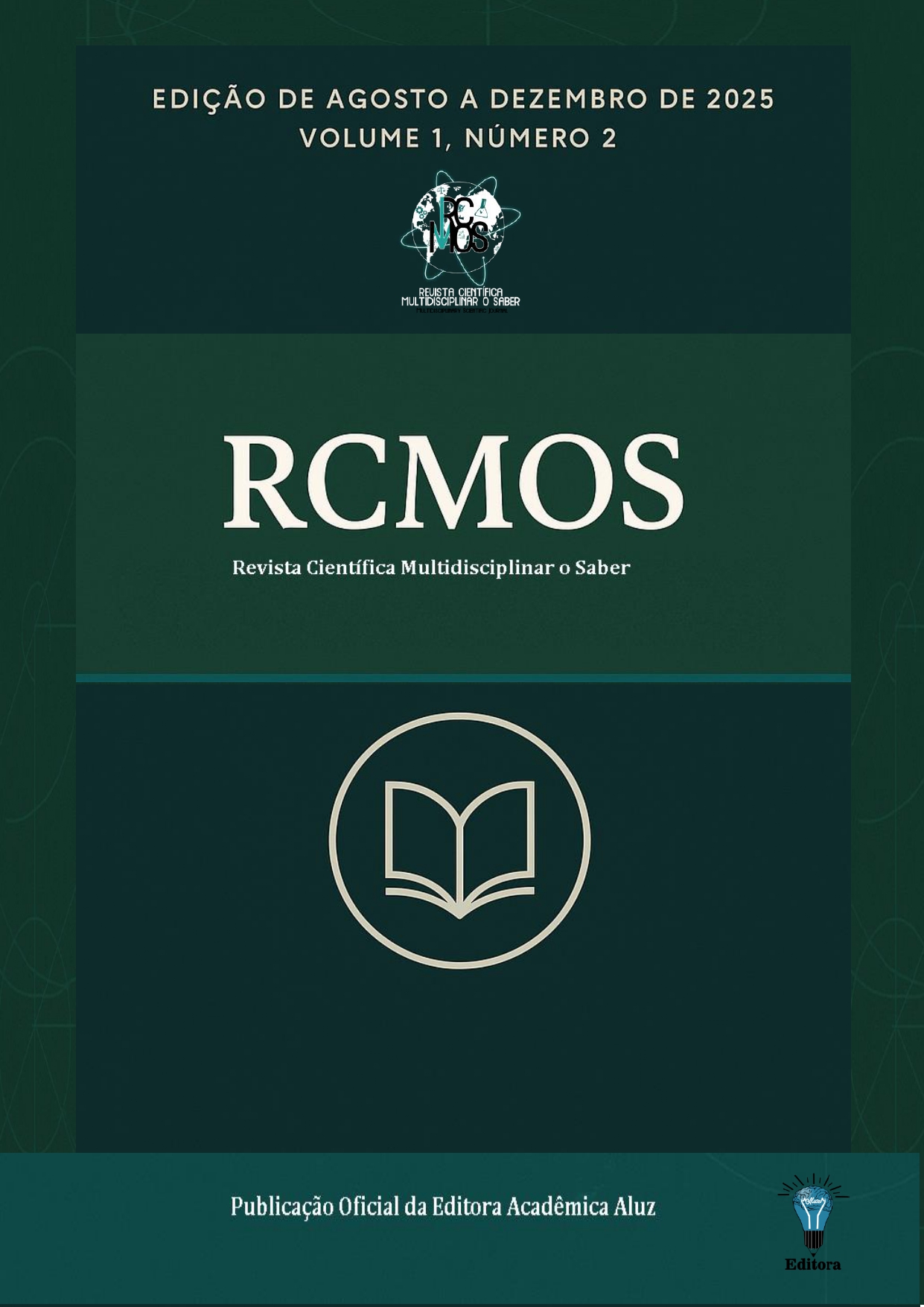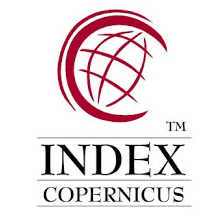Disfunções pélvicas em mulheres praticantes de crossfit
Pelvic dysfunctions in women practicing crossfit
DOI:
https://doi.org/10.51473/rcmos.v1i2.2025.1576Palavras-chave:
incontinência urinária; assoalho pélvico; prolapso; exercício; Crossfit.Resumo
O CrossFit é uma modalidade cada vez mais popular entre as mulheres e os exercícios propostos de alto impacto, podem influenciar a função dos músculos do assoalho pélvico. I objetivo deste estudo é avaliar as disfunções do assoalho pélvico em mulheres praticantes de Crossfit. Trata-se de um estudo transversal que foi realizado em mulheres entre 18 e 40 anos de idade. A coleta de dados, via questionários online, foi realizada no formato eletrônico por meio da plataforma Google Forms, o qual continha questões sobre dados sociodemográficos, antropométricos, história obstétrica, caracterização da atividade de Crossfit e sobre o conhecimento das contrações dos músculos do assoalho pélvico e a identificação de suas disfunções (incontinência urinária, incontinência anal, dor na relação sexual e prolapsos de órgãos pélvicos). Como resultados encontrou-se que 73,4% das participantes apresentam uma ou mais disfunções do assoalho pélvico, sendo 35,1% de incontinência urinaria (33% referem a perda durante o treino), 4,3% de prolapsos, 26,6% de dor na relação sexual, 27,7% perda de flatos, 10,7% perda de fezes 30,9% presença de constipação intestinal. A análise de regressão logística com os fatores de risco para disfunção do assoalho pélvico demonstrou significância estatística na variável “prática” de outro exercício físico (p= 0,023). Nas comparações entre os grupos com e sem disfunção do assoalho pélvico não houve diferença. Portanto, o estudo demonstrou que há uma alta prevalência de disfunção do assoalho pélvico em mulheres praticantes de CrossFit, sendo a incontinência urinária o sintoma mais relatado. A única associação encontrada foi na prática de outro exercício físico além do CrossFit.
Downloads
Referências
ALMEIDA, M. B. et al. Disfunções de assoalho pélvico em atletas. Femina, v. 39, n. 8, 2011.
ALMEIDA, M. B. et al. Urinary incontinence and other pelvic floor dysfunctions in female athletes in Brazil: A cross-sectional study. Scand J Med Sci Sports, v. 26, n. 9, p. 1109–1116, set. 2016. Disponível em: http://www.ncbi.nlm.nih.gov/pubmed/26369504
ALVAREZ-GARCIA, C.; DOGANAY, M. The prevalence of urinary incontinence in female CrossFit practitioners: A systematic review and meta-analysis. Arch Esp Urol, v. 75, n. 1, p. 48–59, jan. 2022.
ARAÚJO, M. P.; BRITO, L. G. O.; ROSSI, F. Prevalence of female urinary incontinence in CrossFit practitioners and associated factors: an internet population-based survey. Female Pelvic Med Reconstr Surg, 2020. Disponível em: https://journals.lww.com/fpmrs/Abstract/2020/02000/Prevalence_of_Female_Urinary_Incontinence_in.4.aspx
. Acesso em: 09 set. 2022.
ALVES, J. O.; LUZ, S. T. D.; BRANDÃO, S.; DA LUZ, C. M.; JORGE, R. N.; DA ROZA, T. Urinary incontinence in physically active young women: Prevalence and related factors. Int J Sports Med, v. 38, n. 12, p. 937–941, nov. 2017. DOI: 10.1055/s-0043-115736. Epub 26 set. 2017. PMID: 28950397.
BO, K. Urinary incontinence, pelvic floor dysfunction, exercise and sport. Sports Med, v. 34, n. 7, p. 451–464, 2004. Disponível em: http://www.ncbi.nlm.nih.gov/pubmed/15233598
.
BO, K.; BORGEN, J. S. Prevalence of stress and urge urinary incontinence in elite athletes and controls. Med Sci Sports Exerc, v. 33, n. 11, p. 1797–1802, 2001.
BO, K.; NYGAARD, I. E. Is physical activity good or bad for the female pelvic floor? A narrative review. Sports Med, v. 50, n. 3, p. 471–484, mar. 2020.
CAETANO, A. S.; TAVARES, M. D. C. G. C. F.; LOPES, M. H. B. D. M. Incontinência urinária e a prática de atividades físicas. Rev Bras Med Esporte, v. 13, p. 270–274, 2007. Disponível em: http://www.scielo.br/scielo.php?script=sci_arttext&pid=S1517-86922007000400012&nrm=iso
CAETANO, A. S.; TAVARES, M. C. G. C. F.; LOPES, M. H. B. M.; POLONI, R. L. Influência da atividade física na qualidade de vida e autoimagem de mulheres incontinentes. Rev Bras Med Esporte, 2009. Disponível em: https://www.scielo.br/j/rbme/a/RY8cpfzTvnHZBxVNj6hTxzg/?lang=pt
CARDOSO, A. M. B.; LIMA, C.; FERREIRA, C. W. S. Prevalence of urinary incontinence in high-impact sports athletes and their association with knowledge, attitude and practice about this dysfunction. Eur J Sport Sci, v. 18, n. 10, p. 1405–1412, nov. 2018.
CARVALHO, C.; DA SILVA SERRÃO, P. R. M.; BELEZA, A. C. S.; DRIUSSO, P. Pelvic floor dysfunctions in female cheerleaders: a cross-sectional study. Int Urogynecol J, v. 31, n. 5, p. 999–1006, maio 2020.
CLAUDINO, J. G.; GABBETT, T. J.; BOURGEOIS, F.; SOUZA, H. S. et al. CrossFit overview: systematic review and meta-analysis. Sports Med Open, v. 4, n. 1, p. 11, 26 fev. 2018.
COKSUER, H.; ERCAN, C. M.; HALILOGLU, B.; YUCEL, M.; CAM, C.; KABACA, C.; KARATEKE, A. Does urinary incontinence subtype affect sexual function? Eur J Obstet Gynecol Reprod Biol, v. 159, n. 1, p. 213–217, 2011.
DOMINGUEZ-ANTUNA, E.; DIZ, J. C.; SUAREZ-IGLESIAS, D.; AYAN, C. Prevalence of urinary incontinence in female CrossFit athletes: a systematic review with meta-analysis. Int Urogynecol J, 30 maio 2022. Disponível em: https://doi.org/10.1007/s00192-022-05244-z
DUMOULIN, C.; HAY-SMITH, E. J.; MAC HABEE-SEGUIN, G. Pelvic floor muscle training versus no treatment, or inactive control treatments, for urinary incontinence in women. Cochrane Database Syst Rev, n. 5, p. CD005654, 14 maio 2014.
ELKS, W. et al. The stress urinary incontinence in CrossFit (SUCCeSS) study. Female Pelvic Med Reconstr Surg, v. 26, n. 2, p. 101–106, fev. 2020. Disponível em: http://www.ncbi.nlm.nih.gov/pubmed/31990796
.
GLASSMAN, G. About affiliation. Disponível em: https://www.crossfit.com/affiliate
. Acesso em: 23 fev. 2021.
HAGOVSKA, M. et al. Prevalence and risk of sport types to stress urinary incontinence in sportswomen: a cross-sectional study. Neurourol Urodyn, v. 37, n. 6, p. 1957–1964, ago. 2018. Disponível em: http://www.ncbi.nlm.nih.gov/pubmed/29464810
.
HENTSCHEL, H. et al. Validação do Female Sexual Function Index (FSFI) para uso em língua portuguesa. Rev HCPA Fac Med Univ Fed Rio Gd do Sul, v. 27, ed. 1, p. 10–14, 2007.
HEATH, A. et al. Stress urinary incontinence in female. Womens Health Phys Therap, v. 38, ed. 3, p. 104–109, 2014.
HIGH, R.; THAI, K.; VIRANI, H.; KUEHL, T. et al. Prevalence of pelvic floor disorders in female CrossFit athletes. Female Pelvic Med Reconstr Surg, v. 26, n. 8, p. 498–502, ago. 2020.
MENSE, S. Nociception from skeletal muscle in relation to clinical muscle pain. Pain, v. 54, p. 241–289, 1993.
MINASSIAN, V. A.; DRUTZ, H. P.; AL-BADR, A. Urinary incontinence as a worldwide problem. Int J Gynecol Obstet, v. 82, n. 3, p. 327–338, 2003. Disponível em: https://obgyn.onlinelibrary.wiley.com/doi/abs/10.1016/S0020-7292%2803%2900220-0
. Acesso em: 02 mar. 2021.
OLIVEIRA, F. G. A. Incontinência urinária feminina em praticantes de CrossFit: uma revisão da literatura. Trabalho de conclusão de curso (Graduação em Fisioterapia) – UFRN, 2019.
PISANI, G. K.; DE OLIVEIRA SATO, T.; CARVALHO, C. Pelvic floor dysfunctions and associated factors in female CrossFit practitioners: a cross-sectional study. Int Urogynecol J, 30 out. 2020. Disponível em: http://www.ncbi.nlm.nih.gov/pubmed/33125514
.
POLI DE ARAUJO, M.; BRITO, L. G. O.; ROSSI, F.; GARBIERE, M. L. et al. Prevalence of female urinary incontinence in CrossFit practitioners and associated factors: an internet population-based survey. Female Pelvic Med Reconstr Surg, v. 26, n. 2, p. 97–100, fev. 2020.
ROCKWOOD, T. H. et al. Patient and surgeon ranking of the severity of symptoms associated with fecal incontinence: the fecal incontinence severity index. Dis Colon Rectum, v. 42, p. 1525–1531, 1999. Disponível em: https://doi.org/10.1007/BF02236199
. Acesso em: 13 mar. 2021.
SILVA, L.; LOPES, M. H. B. M. Incontinência urinária em mulheres: razões da não procura por tratamento. Rev Escola Enfermagem. USP, v. 8, p. 43–72, 2009.
SOUZA, J. M. S.; SIQUEIRA, N. M. Prevalência de incontinência urinária em mulheres praticantes de CrossFit. Trabalho de Conclusão de Curso (Graduação em Fisioterapia). Faculdade Pernambucana de Saúde, Recife, 2017.
TAMANINI, J. T. et al. The Portuguese validation of the International Consultation on Incontinence Questionnaire-Vaginal Symptoms (ICIQ-VS) for Brazilian women with pelvic organ prolapse. Int Urogynecol J Pelvic Floor Dysfunct, v. 19, n. 10, p. 1385–1391, out. 2008.
TAMANINI, J. T. et al. [Validation of the "International Consultation on Incontinence Questionnaire – Short Form" (ICIQ-SF) for Portuguese]. Rev Saude Publica, v. 38, n. 3, p. 438–444, jun. 2004.
TEIXEIRA, R. V. et al. Prevalence of urinary incontinence in female athletes: a systematic review with meta-analysis. Int Urogynecol J, v. 29, n. 12, p. 1717–1725, dez. 2018. Disponível em: http://www.ncbi.nlm.nih.gov/pubmed/29654349
TIBANA, R. A. et al. CrossFit®: riscos ou benefícios? O que sabemos até o momento? Rev Bras Cien Mov, v. 23, n. 1, p. 182–185, 2015.
VELAZQUEZ-SAORNIL, J.; MENDEZ-SANCHEZ, E.; GOMEZ-SANCHEZ, S.; SANCHEZ-MILA, Z. et al. Observational study on the prevalence of urinary incontinence in female athletes. Int J Environ Res Public Health, v. 18, n. 11, 24 maio 2021.
VITTON, V.; BAUMSTARCK-BARRAU, K.; BRARDJANIAN, S.; CABALLE, I. et al. Impact of high-level sport practice on anal incontinence in a healthy young female population. J Womens Health (Larchmt), v. 20, n. 5, p. 757–763, maio 2011.
WEI, J. T.; DELANCEY, J. O. L. Functional anatomy of the pelvic floor and lower urinary tract. Clin Obstet Gynecol, v. 47, n. 1, p. 3–17, 2004.
WHAT IS CROSSFIT. CrossFit, Inc. (EUA), 2021. Disponível em: https://www.crossfit.com/
. Acesso em: 23 fev. 2021.
WU, J. M.; VAUGHAN, C. P.; GOODE, P. S.; REDDEN, D. T. et al. Prevalence and trends of symptomatic pelvic floor disorders in U.S. women. Obstet Gynecol, v. 123, n. 1, p. 141–148, jan. 2014.
YANG, J. et al. The effect of high impact CrossFit exercises on stress urinary incontinence in physically active women. Neurourol Urodyn, v. 38, n. 2, p. 749–756, fev. 2019. Disponível em: http://www.ncbi.nlm.nih.gov/pubmed/30620148
ZOMKOWSKI, K. Você sabe o que é o assoalho pélvico? Loren Corporis, 2021. Disponível em: https://loremcorporis.com.br/assoalho-pelvico-entenda-a-importancia-de-mante-lo-saudavel/
. Acesso em: 13 mar. 2022.
Downloads
Publicado
Edição
Seção
Categorias
Licença
Copyright (c) 2025 Lara Retz dos Santos Prado, Gabriela Marini Prata (Autor)

Este trabalho está licenciado sob uma licença Creative Commons Attribution 4.0 International License.
Este trabalho está licenciado sob a Licença Creative Commons Atribuição 4.0 Internacional (CC BY 4.0). Isso significa que você tem a liberdade de:
- Compartilhar — copiar e redistribuir o material em qualquer meio ou formato.
- Adaptar — remixar, transformar e construir sobre o material para qualquer propósito, inclusive comercial.
O uso deste material está condicionado à atribuição apropriada ao(s) autor(es) original(is), fornecendo um link para a licença, e indicando se foram feitas alterações. A licença não exige permissão do autor ou da editora, desde que seguidas estas condições.
A logomarca da licença Creative Commons é exibida de maneira permanente no rodapé da revista.
Os direitos autorais do manuscrito podem ser retidos pelos autores sem restrições e solicitados a qualquer momento, mesmo após a publicação na revista.













